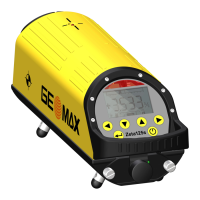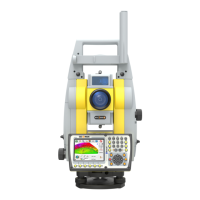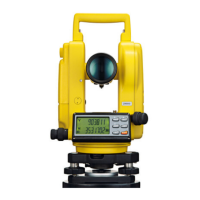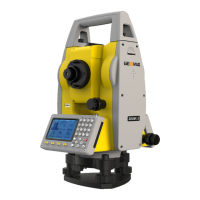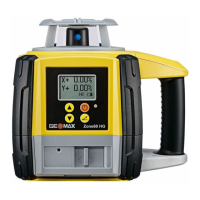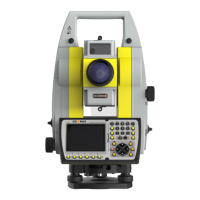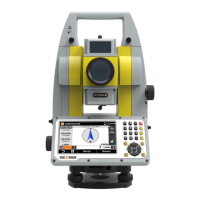Application example:
9. Stakeout
Inside the selected job go to the Stakeout tab and select one option.
10. Perform a stake out as instructed by the arrow and the values on the left side of the
screen.
4.5 Guidelines for Correct Results with GNSS Surveys
Successful GNSS surveys require undisturbed satellite signal reception, especially at the instru-
ment which serves as a base. Set up the instrument in locations which are free of obstructions
such as trees, buildings or mountains.
For static surveys, the instrument must be kept perfectly steady throughout the entire occupa-
tion of a point. Place the instrument on a tripod or pillar.
Centre and level the instrument precisely over the marker.
The Zenith60 has an integrated Inertial Measurement Unit (IMU) that is used in combination with
GNSS measurements. It has the following advantages:
•
It allows tilt compensated measurements that are immune to the magnetic interferences.
•
There is no need to calibrate the sensor.
•
The pole can be tilted up to 60°. To ensure high accuracy measurements, it is recommen-
ded that the pole is tilted no more than 30°.
•
Precondition for performing tilt compensated measurements is the initialising of the IMU. To
initialise the IMU, move the Zenith60 around by taking a few steps or shaking the antenna
back and forth.
Undisturbed satellite sig-
nal reception
Steady instrument for
static surveys
Centred and levelled
instrument
Tilt measurement
28
Operation
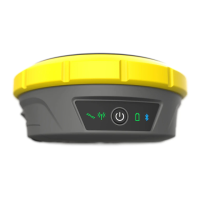
